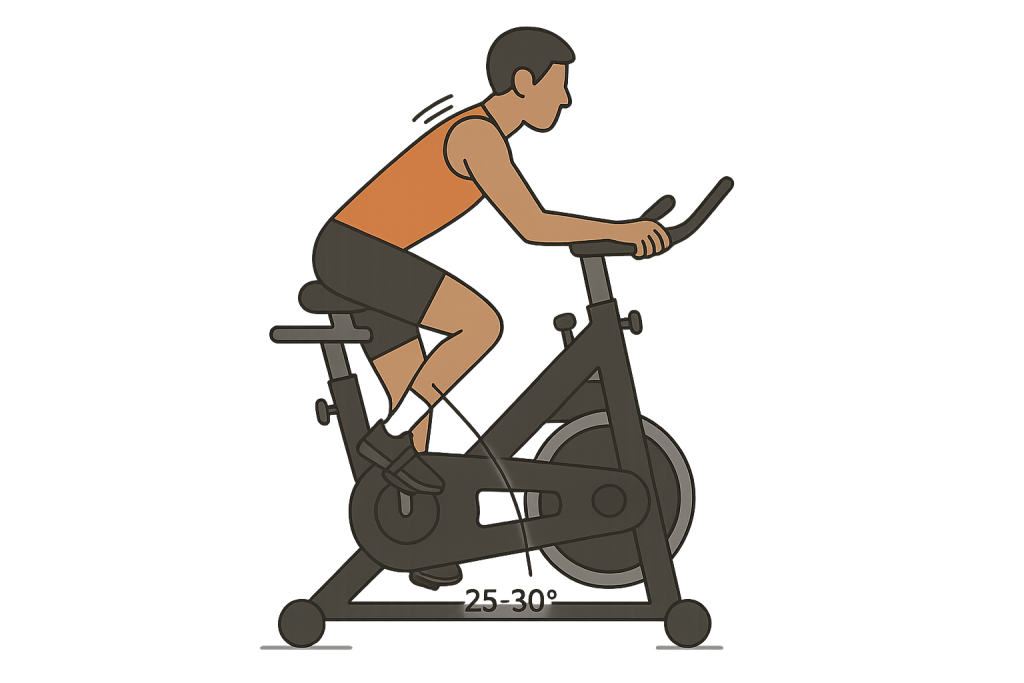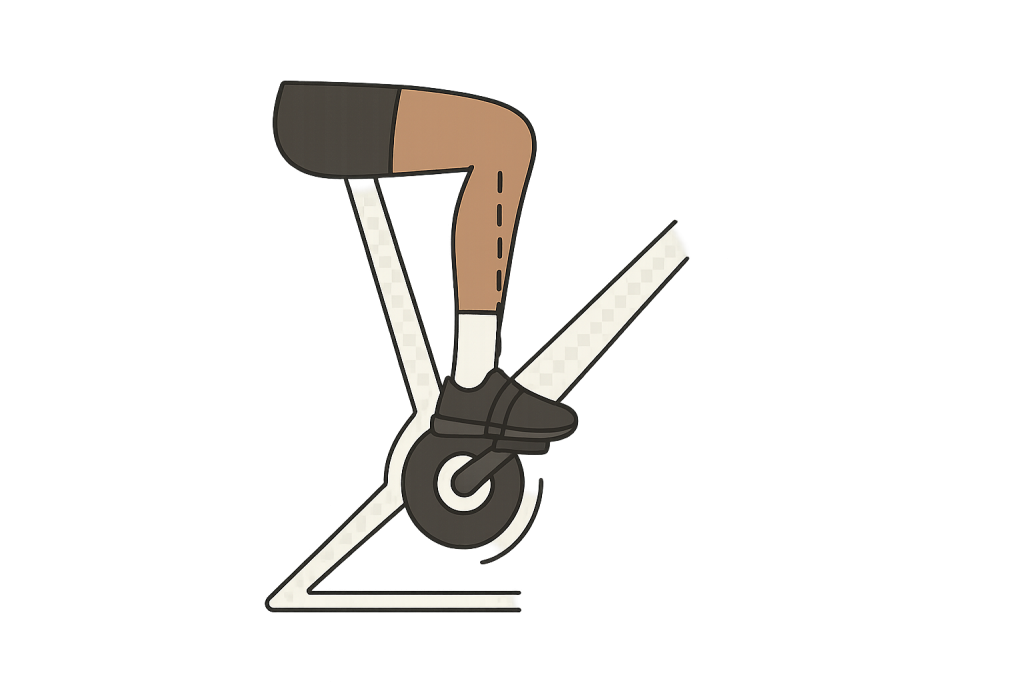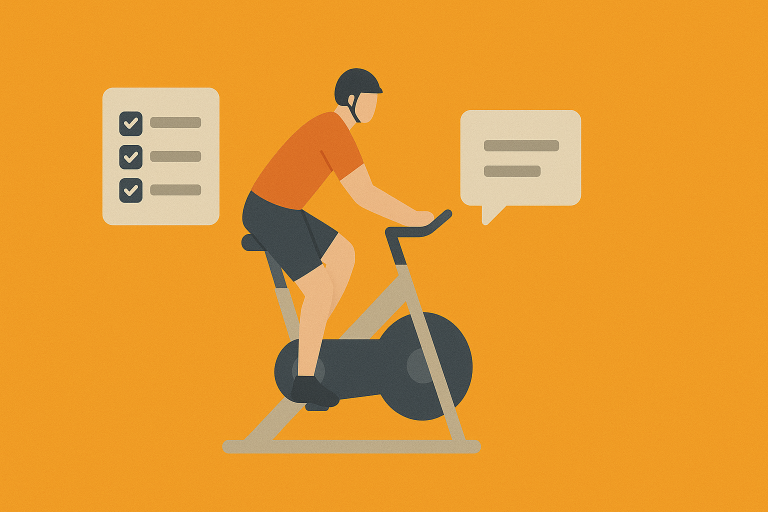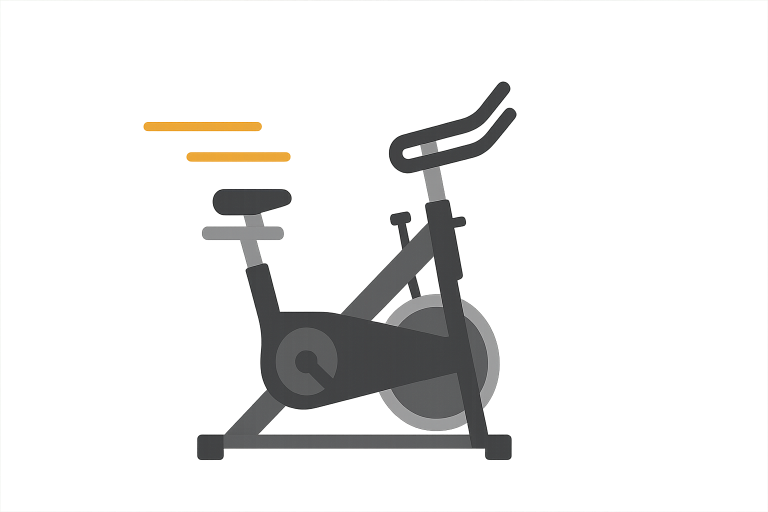Common Indoor Cycling Mistakes: Top 10 for Beginners
The Best Way to Start Your Indoor Cycling Experience
Indoor cycling has become a popular and convenient fitness routine. You can exercise on your own schedule, avoid traffic, and keep training regardless of the weather. Smart trainers and specialized indoor bikes have made working out at home easier than ever.
However, many new riders develop habits that slow their progress and raise their risk of injury. As a certified trainer, I have seen countless beginners make the same preventable errors. The encouraging part is that these common mistakes indoor cycling beginners make are simple to fix once you know what to look for.
Why Focusing on Mistakes Leads to the Best Results
Understanding and correcting common indoor cycling mistakes helps you improve faster than just listing correct actions. When you know what goes wrong and why, you naturally avoid those pitfalls.
Fixing just a few fundamental errors immediately reduces your risk of injury and boosts your power output. Riders often see a noticeable increase in both comfort and performance within a single session by making basic adjustments.
The Simple Fixes for Common Indoor Cycling Mistakes
Most common indoor cycling mistakes are easy to correct. You do not need expensive equipment or years of experience. Simple adjustments to your bike setup, form, and training plan will transform your indoor cycling experience.
Category 1: Essential Bike Setup Blunders (Mistakes 1-3)
The biggest source of common indoor cycling mistakes happens before you even start pedaling. Your bike setup is critical for both your safety and performance. An improperly adjusted bike is the root cause of most new rider discomfort.
Mistake 1: Ignoring the Proper Bike Fit
When your stationary bike does not match your body weight and proportions, you will experience unnecessary strain and reduce your power transfer. Many riders mistakenly believe discomfort is simply a part of indoor training. Poor posture and pain often stem directly from an incorrect bike setup.
Finding the Correct Saddle Height
Setting the correct saddle height requires more precision than many beginners realize. Your seat height directly impacts knee health, power generation, and comfort during indoor rides.
- The Check: When your foot is at the bottom of the pedal stroke, your knee should have a slight bend, about 25 to 30 degrees. Your leg should not be completely straight or significantly bent.
- The Signs: If your hips rock side to side while pedaling, your saddle height is too high. If your knees come up toward your chest excessively, it is too low.
- The Impact: An incorrect saddle height is a leading cause of knee pain and strain on your lower back.

Setting the Right Handlebar Position
The handlebar height relative to your saddle affects comfort and strain on your lower back. For new riders, a more relaxed posture is the best way to start.
- Starting Point: Begin with your handlebars at or slightly above your saddle level.
- Progression: You can gradually lower the handlebar height as your core strength and flexibility improve.
- Remember: Indoor riding does not require the aggressive, low position used for speed in outdoor cycling.
Mistake 2: Not Adjusting the Saddle Fore/Aft Position
Proper fore/aft (front-to-back) saddle position prevents knee pain and ensures efficient muscle use. This adjustment ensures correct force distribution.
- The Alignment Rule (K.O.P.S.): When your pedal is in the forward position (3 o’clock), your knee should align vertically over the center of the pedal spindle.
- Consequence of Error: Incorrect alignment often leads to that nagging knee discomfort that causes people to quit their fitness routine.
- Muscle Impact: Correct alignment allows for balanced use of your leg muscles, including your quadriceps, hamstrings, and glutes. Poor posture or alignment forces certain muscle groups to compensate, causing premature muscle fatigue and an increased risk of injuries.

Mistake 3: Using the Wrong Gear
Using the right equipment, even simple items, improves your indoor cycling experience and comfort.
- Pedal Choice: If your spin bike or indoor cycling bike allows, using clipless pedals with cycling shoes significantly improves efficiency. They let you push down and pull up throughout the pedal stroke.
- Essential Attire: A good sports bra provides necessary support during intense activity. Form-fitting bottoms prevent fabric from catching on the saddle or pedals. Avoid loose shorts or cotton shirts that get heavy with sweat during long rides.
Category 2: Form, Posture, and Technique Traps (Mistakes 4-6)
Once the bike setup is correct, maintaining good form is the best way to save energy and prevent risk of injury. These are some of the most common mistakes indoor cycling beginners make in their technique.
Mistake 4: The “Death Grip” on Handlebars
The “death grip” is when riders clench the handlebars too tightly. This common error wastes energy and creates unnecessary tension in the upper body, shoulders, and neck.
- Handlebars are for Balance: Handlebars should be used for stability, not for supporting your body weight.
- Relaxed Grip: Use a light, relaxed grip. Your arms should have a slight bend at the elbows, and your shoulders should remain down and relaxed.
- Core Engagement: Focus on engaging your core muscle groups to support your upper body position. This keeps weight off your hands and allows for better breathing.
Mistake 5: Developing Poor Posture and a Rounded Back
Poor posture on the bike significantly increases the risk of injuries, especially to your lower back. A hunched back and rounded shoulders create strain that builds up over time.
- Achieving Good Posture: Keep your chest open and imagine a string gently pulling your head up. Keep your shoulders relaxed and pulled back slightly.
- The Neutral Position: Maintain a neutral position with a gentle arch in your lower back. Your elbows should have a slight bend and should not be locked straight. Good posture optimizes breathing and reduces strain on your spine.

Mistake 6: “Spinning Out” with Too Little or Too Much Resistance
Using the wrong resistance is one of the most common exercise bike mistakes. This affects how hard your leg muscles work.
- The Low Cadence Trap: Using very low cadences with much resistance too early causes unnecessary muscle fatigue and joint strain. New riders often think more resistance equals best results, which is incorrect.
- The High Cadence Trap: Using too little resistance and pedaling too fast (“spinning out”) gives minimal training benefit. This provides no effective challenge to your muscles or cardiovascular system.
- The Sweet Spot: Find a place where you can keep a steady cadence (often 80–100 RPM) while feeling challenged but not overwhelmed. You should feel the work in your legs but still maintain proper form.
Category 3: Training Strategy and Fueling Errors (Mistakes 7-10)
Avoiding these final common mistakes indoor cycling beginners make ensures you make sustainable progress and get the best results from your training.
Mistake 7: Ignoring Hydration During Indoor Sessions
Indoor riding requires more attention to hydration than outdoor riding because you lack natural airflow to cool you down. Your body temperature rises more quickly without wind.
- Hydration Tips: Keep your water bottle within easy reach. Take small, frequent sips throughout your workout. Do not wait until you feel thirsty.
- Longer Rides: For long rides lasting over 60 minutes, consider adding electrolytes to your water. This helps transport nutrients and maintains proper muscle function.
Mistake 8: Skipping Warm-Up and the Post-Workout Stretch
A proper warm-up and cool-down are crucial for reducing injury risk and promoting recovery.
- Warm-Up: Start with five to ten minutes of low intensity pedaling, gradually increasing the pace. This prepares your leg muscles and heart rate for intense activity. It significantly reduces muscle strain.
- Cool-Down: Spend five minutes pedaling easily to bring your heart rate down. Follow this with a post-workout stretch of your major muscle groups: hip flexors, quadriceps, hamstrings, and calves.
Mistake 9: Training Too Hard, Too Often (Overtraining)
Rest days are vital for muscle repair and preventing burnout in your fitness routine. Muscles grow stronger during recovery, not the workout itself.
- Recovery is Key: New riders often believe more exercise is better, but this often leads to injury and decreased performance.
- Training Plan: Stick to a structured training plan. A smart trainer or smart bike can provide excellent plans that balance work and recovery.
- Starting Out: Aim for three to four indoor sessions per week initially, with at least one complete rest day between intense periods. This allows for consistent progress.
Mistake 10: Obsessing Over Output Metrics
While power meters and heart rate monitors provide useful data, beginners should prioritize proper form and comfort level.
- Focus on Form: Do not sacrifice good form for high numbers. The metrics are tools to guide training, not the main goal.
- Realistic Goals: Focus on personal improvement instead of comparing yourself to others. Set process goals, such as maintaining good posture, staying hydrated, or consistently completing planned workouts. Performance metrics will improve naturally.
Conclusion: Your Best Way Forward for Indoor Training Success
Indoor training offers incredible opportunities for consistent improvement. With the right bike setup and technique, indoor cycling becomes an enjoyable and effective part of your fitness routine.
The Common Indoor Cycling Mistake Checklist
Before your next ride, quickly check these three critical areas:
| Area | Key Checks | Purpose |
|---|---|---|
| Bike Fit | Ensure saddle height, fore/aft position, and handlebar height match your proportions. | Prevents discomfort and injury. |
| Good Form | Maintain a relaxed grip, neutral position, and an appropriate resistance level. | Saves energy and optimizes technique. |
| Training Approach | Use a proper warm-up, realistic intensity, and plenty of water. | Promotes recovery and sustainability. |
These fundamentals prevent the most common mistakes indoor cycling beginners make and set you up for long-term success. The foundation you are building now will serve you well, whether you progress to a road bike for outdoor rides, a mountain bike for trails, or advanced trainer rides on direct-drive trainers or a smart bike.






